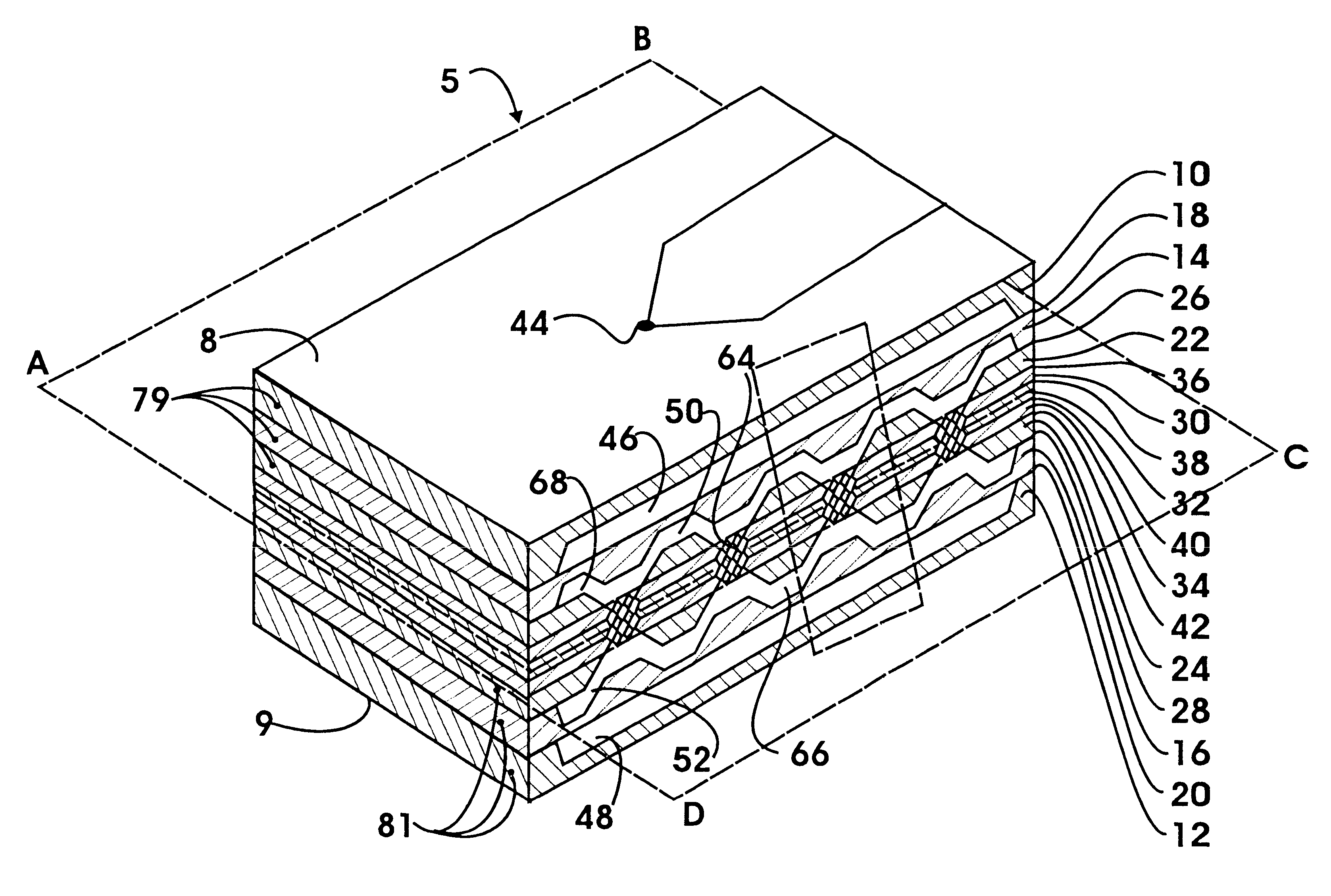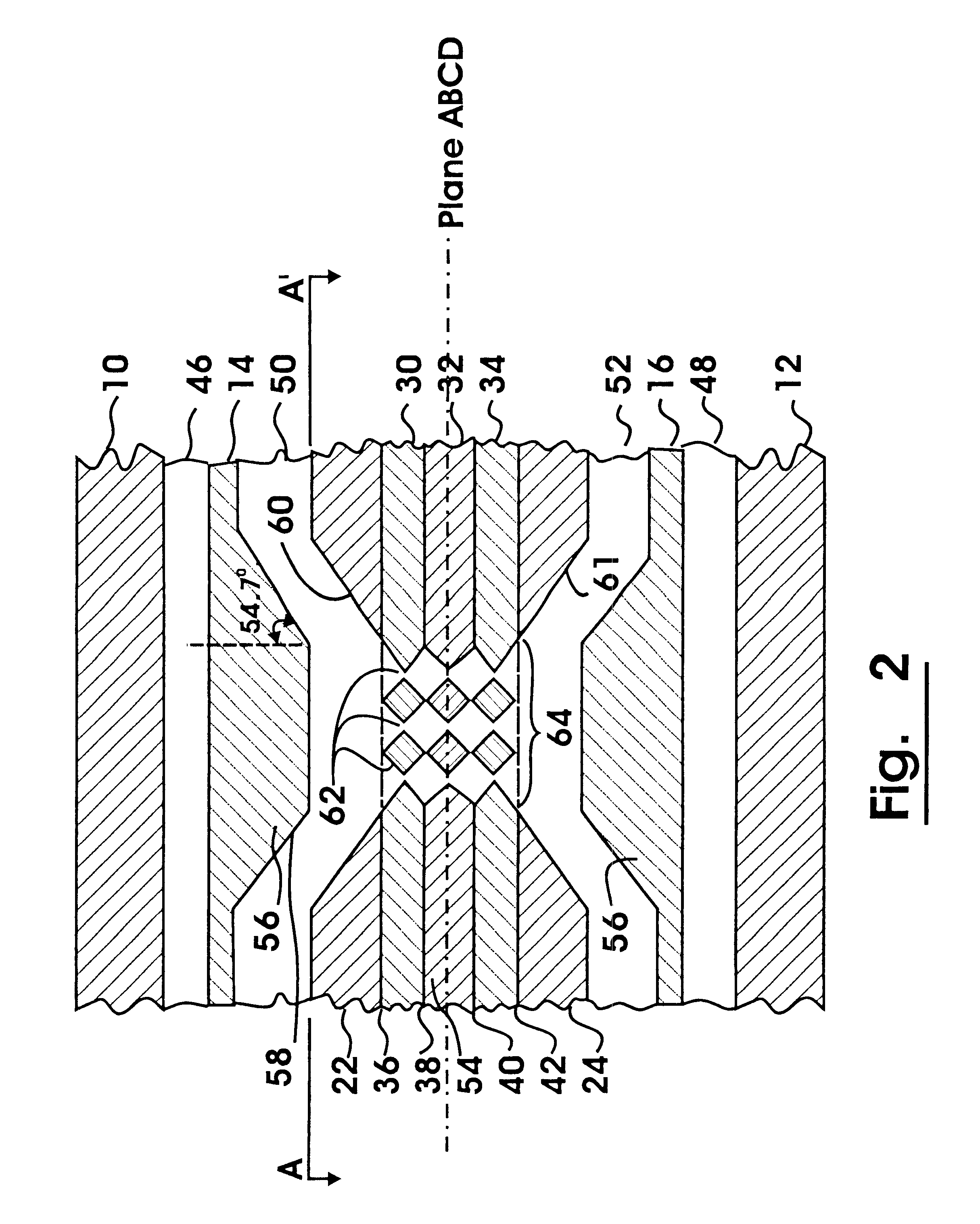Micro-scalable thermal control device
a thermal control device and micro-scalable technology, applied in the field of micro-scalable thermal control devices, can solve the problems of difficult miniaturization of many of these traditional heating and cooling devices, the limitations of micro-scale and traditional scale thermal control devices, etc., and achieve the effect of heating or cooling a relatively large surface area
- Summary
- Abstract
- Description
- Claims
- Application Information
AI Technical Summary
Benefits of technology
Problems solved by technology
Method used
Image
Examples
Embodiment Construction
Referring now to the drawings, in particular to FIG. 1, there is shown therein a first exemplary embodiment of a microscalable temperature control module generally referred to by reference numeral 5. Module 5 comprises a plurality of rectangular layers. Portions of all functional layers are removed to give module 5 an internal structure, described in more detail below.
Module 5, in an exemplary embodiment shown, is symmetric with respect to a plane ABCD that is parallel to the layers and that passes through the longitudinal center of a module 5. Module 5 is bounded by a first thermal energy transfer layer 10, and second thermal energy transfer layer 12.
Interior and adjacent to the first thermal energy transfer layer 10 is a first diaphragm layer 14. Similarly, interior and adjacent to the second thermal energy transfer layer 12 is a second diaphragm layer 16. Interposed between the first thermal energy transfer layer 10 and the first diaphragm layer 14, at all points of contact betwe...
PUM
 Login to View More
Login to View More Abstract
Description
Claims
Application Information
 Login to View More
Login to View More - R&D
- Intellectual Property
- Life Sciences
- Materials
- Tech Scout
- Unparalleled Data Quality
- Higher Quality Content
- 60% Fewer Hallucinations
Browse by: Latest US Patents, China's latest patents, Technical Efficacy Thesaurus, Application Domain, Technology Topic, Popular Technical Reports.
© 2025 PatSnap. All rights reserved.Legal|Privacy policy|Modern Slavery Act Transparency Statement|Sitemap|About US| Contact US: help@patsnap.com



